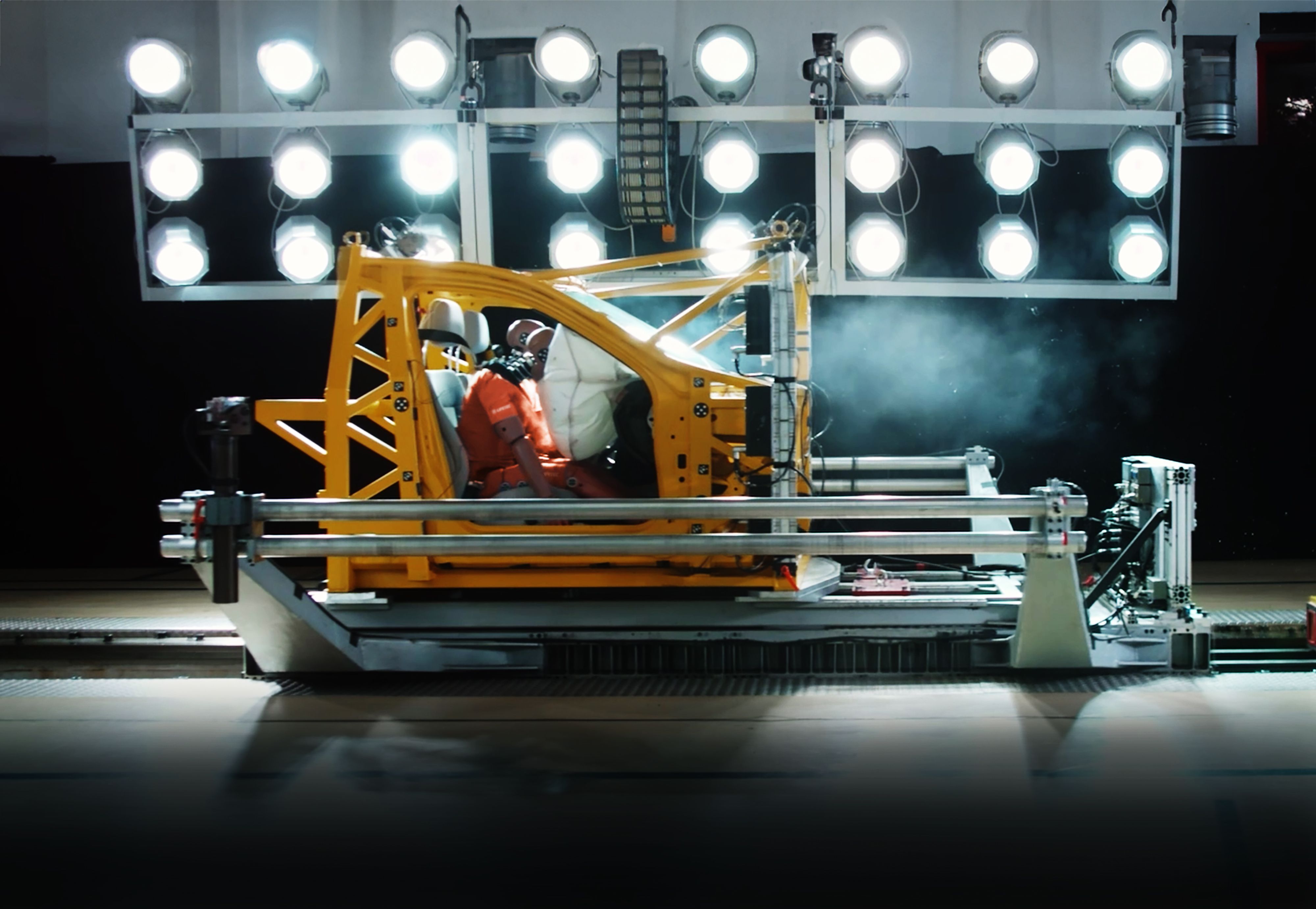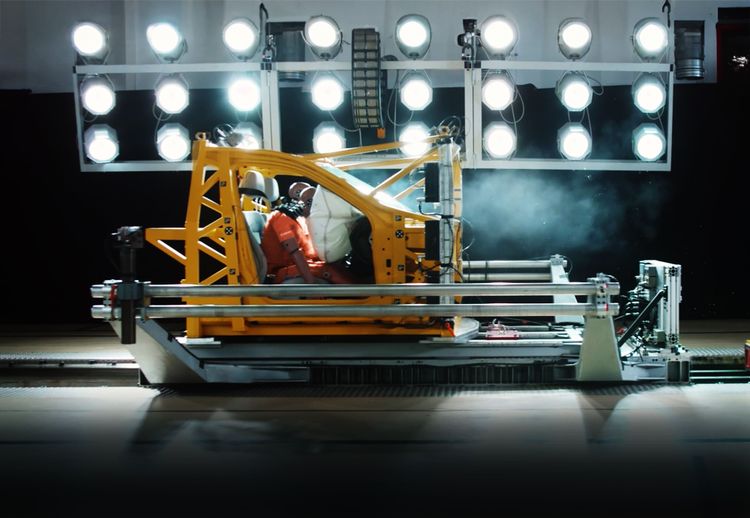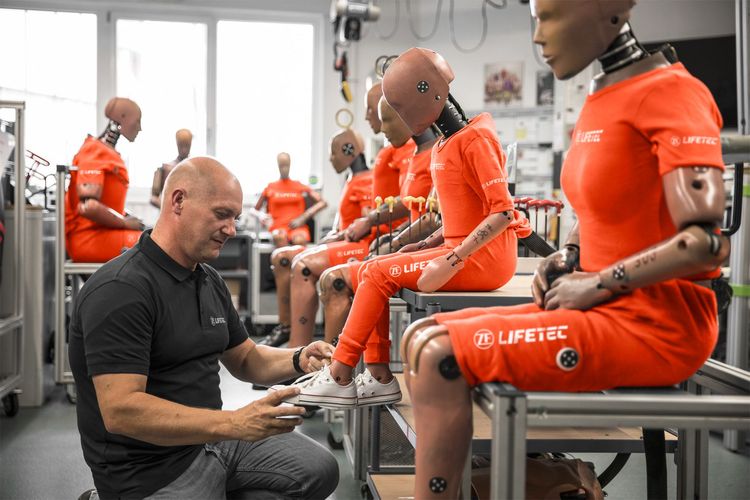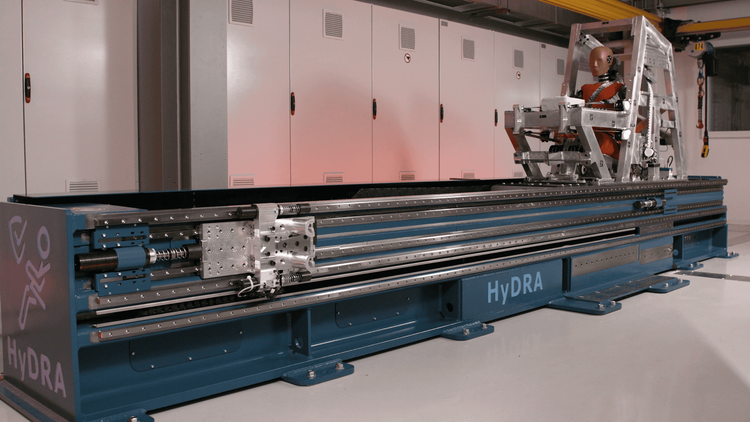ZF LIFETEC enhances occupant protection through innovative test methods
2024-Sep-11- Comprehensive testing procedures ensure innovation and quality at competitive prices
- ZF LIFETEC continues to develop a physical and virtual (hybrid) test cosmos to accelerate development cycles
- Focus on competitive advantage for customers combined with a clear mission and ‘real-life safety’ claim
- ZF LIFETEC focuses on testing and development in three central tech centers and other locations in Europe, America and Asia-Pacific
Alfdorf, Germany. When accelerations of more than 50g tug at dummies, test sleds are accelerated from zero to one hundred in an instant to generate data and to validate new designs and products with physical and virtual tests, and steering wheels, seat belts and even airbags are tortured in endurance testing equipment, it doesn't necessarily sound safe - but it does ensure greater safety. At least when the tests take place in one of the more than 20 test centers or in the three central ZF LIFETEC Tech Centers in Europe, North America and Asia.

Seat belts, airbags and steering wheels are tested under the toughest conditions to guarantee the highest quality standards. ZF LIFETEC not only concentrates on testing expertise that has been built up over decades, but also ventures into new, virtual test areas. In this way, ZF LIFETEC is shortening vehicle development cycles to give its customers a clear competitive advantage in international markets. The vision is clearly defined: To increasingly adapt occupant safety to real-life accident scenarios (Real Life Safety) and thus further reduce the consequences of road traffic accidents for those affected.
What began with the introduction of seat belts in the 1970s and continued with the introduction of airbags in the 1980s is now virtually standard in automotive safety technology. In order to continuously improve these life-saving vehicle systems, the standards for testing them have continued to evolve. Crash tests by car manufacturers have been standard practice since the 1970s at the latest and ZF LIFETEC, as one of the leading system suppliers for passive safety technology for vehicles, also carries out more than 50 dynamic tests per day worldwide. Recently, digital test and validation procedures have been added, which are confirmed by physical tests, enabling safety concepts to be adapted even better to the individual occupant. This is because the focus of the real-life safety approach is on people as individuals and the goal of providing them with even better protection - adapted to their individual stature, gender and age. A wide range of solutions and strategies are available for this adaptive approach to occupant protection, which can only be developed and tested through a combination of physical testing and virtual validation.
The holistic evaluation of a test series is based on a large number of individual load cases which, for example, place different loads on the components of a seat belt system. In order to be able to recognize critical dynamic loads in good time and counteract them correctly, all significant dynamic loads on the belt system (force levels, pull-out distance and speed), including pre-crash dynamics, must be recorded. This also applies to the entire occupant protection system. Developing this overall picture without the interaction of real and virtual tests would require a great deal of time and resources. “This is an attractive topic for the future, because the adaptivity of restraint systems is specified by the NCAPs as a development goal in their current roadmap and rewarded accordingly in crash test evaluations,” said Harald Lutz, Head of Development at ZF LIFETEC.
Worldwide dynamic tests
Another key factor for innovation and quality is testing expertise and equipment. This applies to the testing of individual components as well as complete systems. Dynamic testing refers to the interaction - for example of the seatbelt and airbag - either individually or as a complete system in crash simulations on technically complex sled systems. ZF LIFETEC has sled systems in five key markets (USA, Japan, Italy, China and Germany). All tests are reliably implemented by test engineers and technicians worldwide, in accordance with the requirements that safety assessment organizations such as Euro NCAP, China NCAP, US NCAP or the US regulations of the Federal Motor Vehicle Safety Standard (FMVSS) place on international automobile manufacturers.
ZF LIFETEC is consistently developing and digitalizing testing. The company is using its experience and, not least, the immense amounts of data from previous tests to increasingly virtualize the testing process. “Simulations will not replace real tests, but a good mix of simulation and real tests will make testing much more efficient in the future,” explained Lutz. An important basic requirement for virtual testing is the validation of the underlying assumptions. This is the only way to ensure that virtual tests match reality. To guarantee this, ZF LIFETEC has developed the so-called HyDRA (Hyper Dynamic Response Actuator). This test bench, which is unique in the industry, enables a quick and precise comparison with reality. This validates a digital twin that enables significantly shorter development cycles and serves as an enabler for ‘real-life safety’.
Specialist down to component level
Anyone who is a technology leader in the development and production of restraint systems must also cover a very wide range when it comes to testing components: This is because it involves the development of textiles for belts and airbags, from metal or plastic housings to pyrotechnic propellants and high-precision safety systems. Comprehensive material and environmental simulation tests are on the agenda for all components, especially in the prototype phase. Here, ageing and wear processes are simulated and run through under realistic conditions, often with the help of specially developed test benches. Specifically, the influence of salt water, sunlight or dust, for example, as well as thermal changes or vibrations are determined in this way in order to rule out impairments to subsequent functionality.
All systems must also be tested for electromagnetic compatibility. In the case of steering wheels, for example, which play a central role in the safety and control of a vehicle as a human-machine interface (HMI), this is important in order to design functions such as hands-on-detection to be fail-safe.








